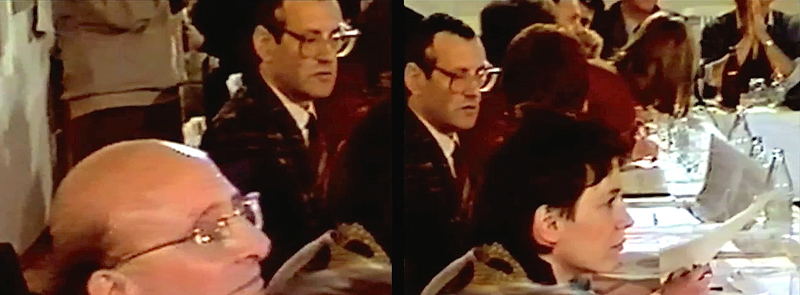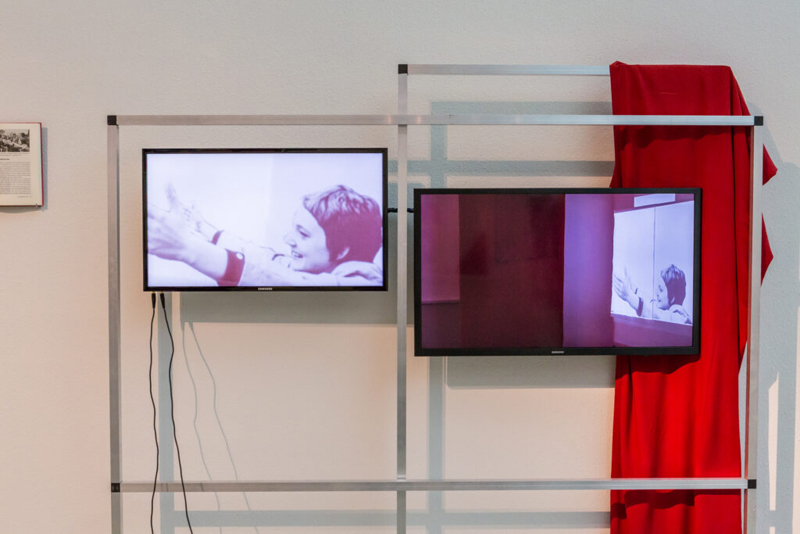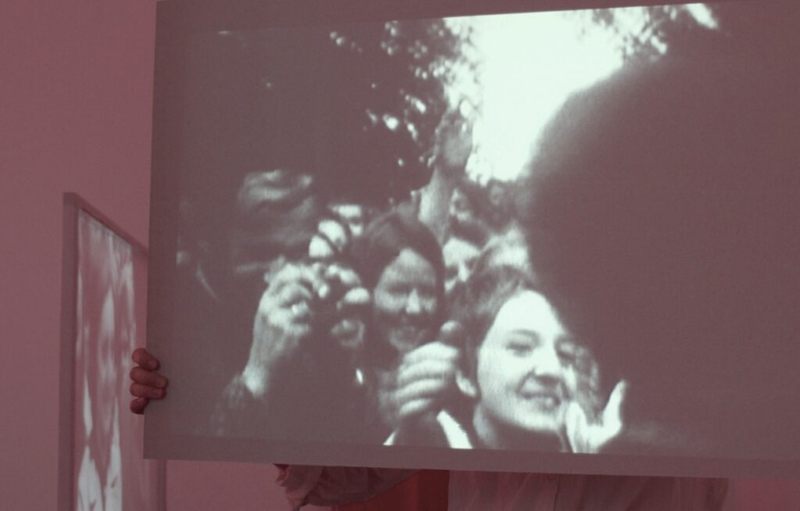by Dagmara Genda // June 8, 2022
This article is part of our artist Spotlight series.
It’s not easy to get a quick overview of Elske Rosenfeld’s practice, not only because her contemplative and research-driven work often comes in the form of texts, performances, or the presentation of documents, though that too, but because her focus is on the experience of stillness, which she understands as a revolutionary gesture. Of course stillness, one might be tempted to point out, is quite easy to picture, whether through a photograph or a painting, but Rosenfeld is much more interested in its embodied experience. In reference to the over-saturation of images from the German Reunification of 1990, Rosenfeld quotes Christina Bylow to point out that this historical event was “illustrated into unintelligibility,” thus pointing to the capacity images not just to reveal, but also to obscure. Working from the body to hone in on the minutiae of the present is a phenomenological approach that might seem opaque to the casual observer, but one that foregrounds the act of observation itself. Rather than the means to get other information, observation of the body and its own capacity to perceive take central stage.

Elske Rosenfeld: ‘Interrupting (A bit of a Complex Situation),’ from the series An Archive of Gestures, 2014, 2-channel video installation, color, sound, 14′, Video still // © Elske Rosenfeld / VG Bild-Kunst, Bonn 2022
Four works from the latest iteration of the on-going ‘An Archive of Gestures’ (2013- ) is what the artist will be presenting at the 12th Berlin Biennale. This archive includes the details and idiosyncrasies of movements at the moment where people, as a grouping of bodies, take a stand—a turn of phrase which itself implies stillness. In other words, Rosenfeld’s archive is a record of the tremblings, stuttering and vibrations of the revolution. Though moments of revolt are preceded by years of work and preparation, as Rosenfeld notes in a chapter for her upcoming book, ‘A Vocabulary of Revolutionary Gestures,’ the moment of their eruption is always unexpected and defies the best laid plans. This point of view is not only theoretical, but grounded in personal experience. Rosenfeld was born in 1974 in Halle, in the GDR, and in 1989, at the age of 15, she experienced what for many was not a joyful reunion, but the erasure of their history and hoped-for future in favour of a narrative of neoliberal modernity. It was often said that the Eastern Bloc would have to “catch up” to the West, as if time had somehow stayed still behind the iron curtain. And while this was naturally not the case, the concept of time does shape a society’s idea of progress and purpose.
So how does Rosenfeld foster stillness in a time of anxious acceleration? How does she heighten her audience’s facility of observation? In one work, titled ‘A bit of a Complex Situation’ (2014), she works with archival footage of the GDR’s Central Round Table of December 7, 1989, which was a series of meetings intended to establish a future for the GDR. Rather than focusing on the bodies of those depicted at the table, or even the sounds of the demonstration heard beyond the windows of the meeting room, Rosenfeld emphasises the observing body by amplifying, repeating and looping the pans, zooms and shaking of the camera recording this “complex situation.” In doing so she undermines the video as an objective eye looking onto the proceedings and situates it as an active participant, one whose act of observation shapes the legacy of the event.

Elske Rosenfeld: ‘Hugging Angela Davis,’ 2020, Installation view at Albertinum, Dresden // Photo by SKD/Laura Fiorio and courtesy of the artist

Elske Rosenfeld: ‘Hugging Angela Davis,’ 2020, video still // Courtesy of the artist
In ‘Hugging Angela Davis’ (2020), Rosenfeld takes as her starting point the now iconic depiction of a spontaneous hug between Angela Davis and a young East German woman, Erika Berthold. In this embrace the members of two political movements touched and through sheer proximity, forced a consideration of their particular ideals and goals in relation to one another. The 2-channel video installation was part of an exhibition at the Albertinum in Dresden whose catalogue, ‘1 Million Roses for Angela Davis,’ was intended to “unfold how Davis’s iconic image came to be inscribed within a global history of resistance.”
Through the embodied gesture, Rosenfeld is committed to exploring a way “forward” that does not delude itself through ideologies of progress, whether they be neoliberal or part of the newest 5-year plan. Since 2018 she has been a board member of the Stiftung Haus der Demokratie und Menschenrechte, an organisation devoted to maintaining and promoting beneficial movements and ideas stemming from the GDR and the 1989 revolution. Rather than throwing the baby out with the bathwater, so to speak, the organisation stands for a third way, one that doesn’t reduce politics to a black and white choice between capitalism and communism. This third way, according to Rosenfeld, is not a theoretical idea nor a cleverly conceived plan. It must be founded in the moment and felt in the body. Revolution, Rosenfeld seems to insist, defies time in that it ruptures our conception of past and future. It alienates us from our taken-for-granted state and questions our role within it. In the revolution, we are rendered bodies imprinted by the records of our particular histories—“archives” Rosenfeld would say. In the revolutionary moment these bodily archives are sites of potential, where narratives can be radically reconfigured. Here we might find a third way, not of going forward, but of productively standing still.





















